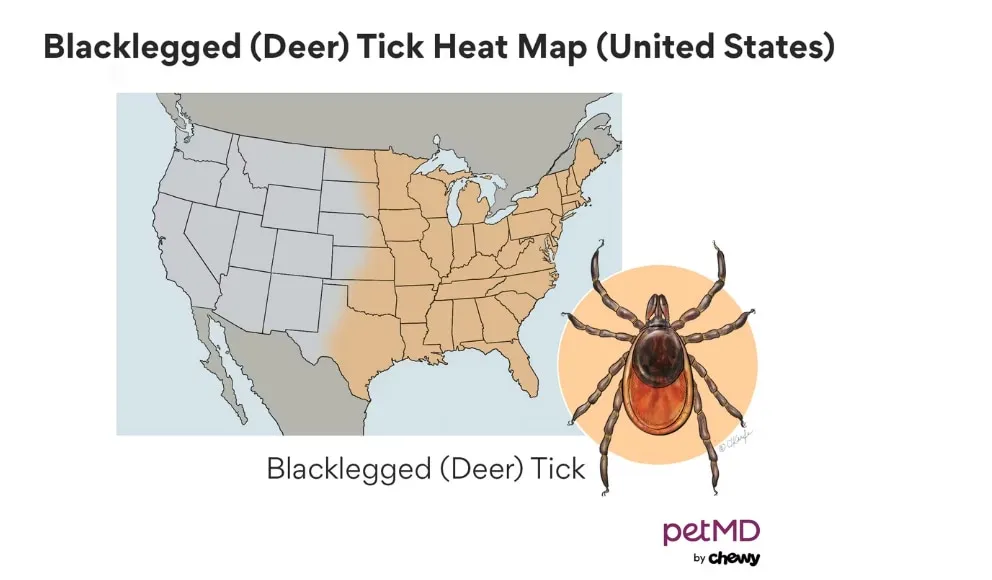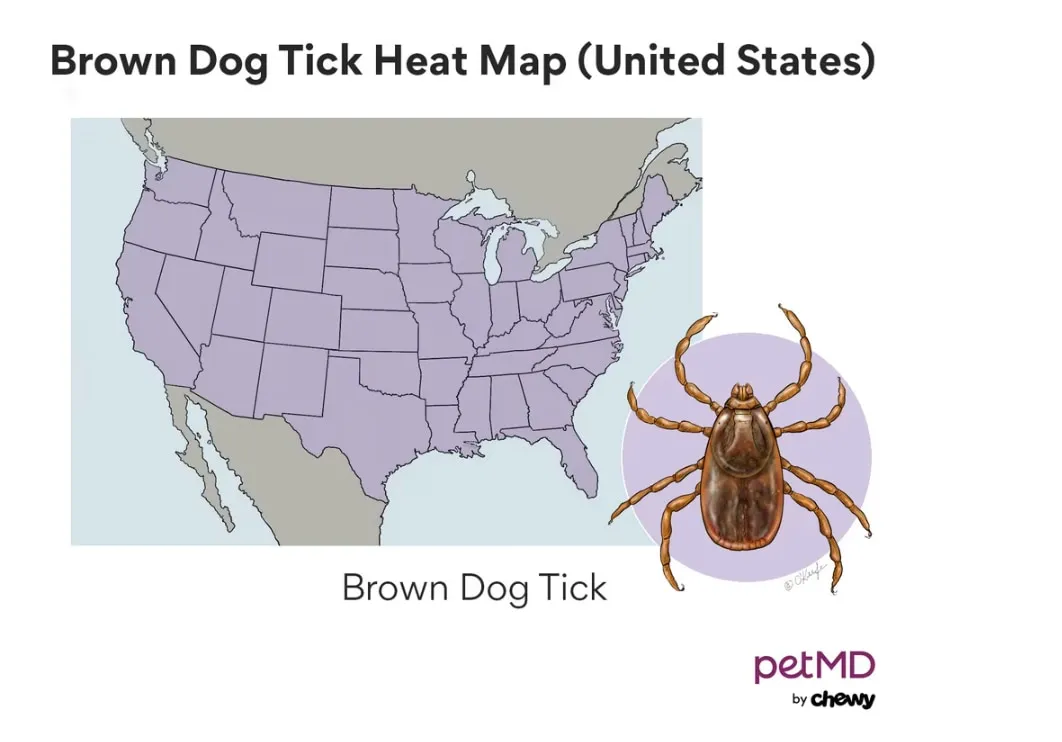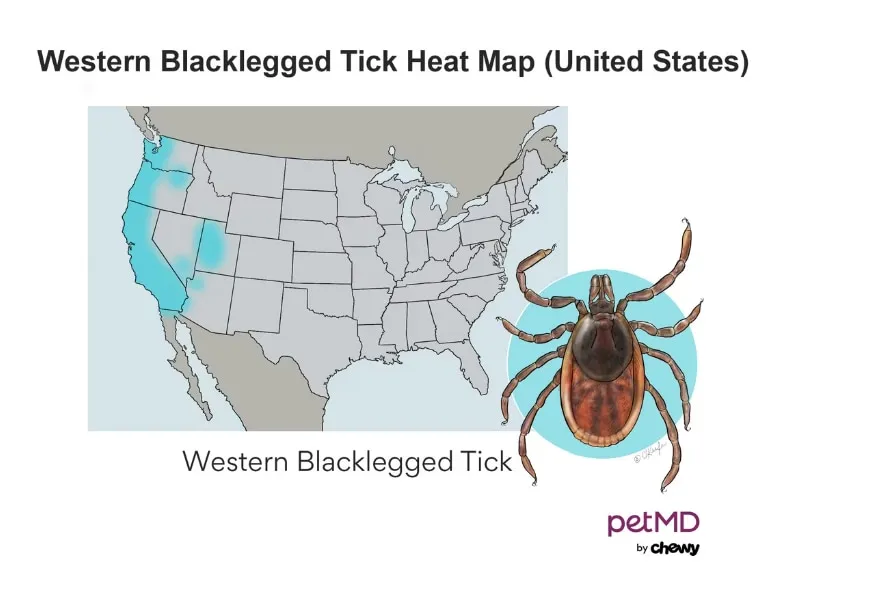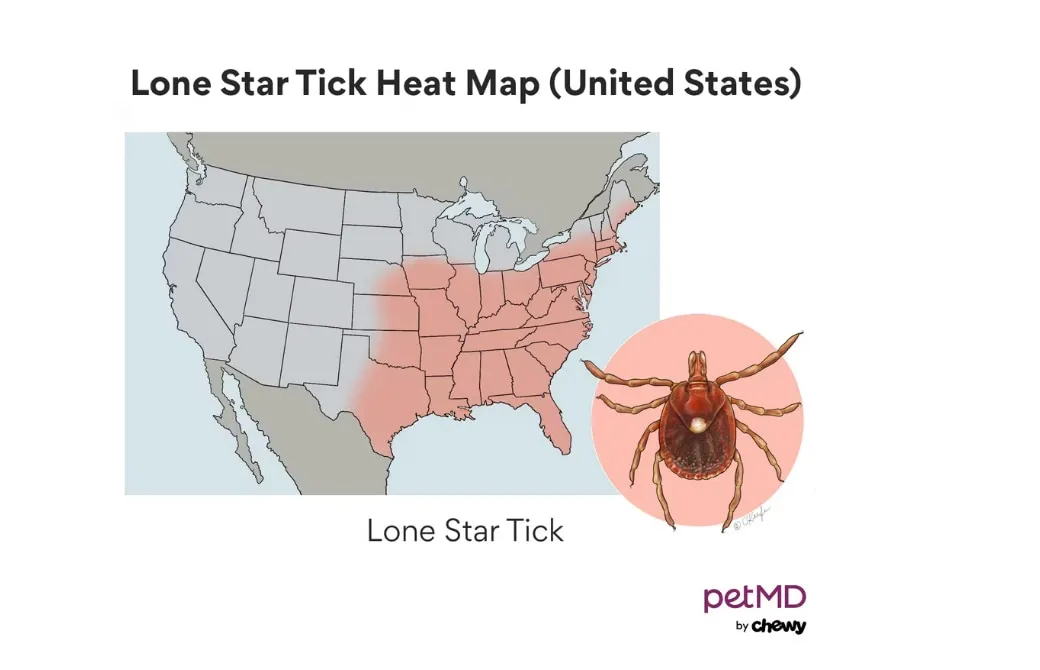Protecting your canine companion from pests like fleas and ticks is a cornerstone of responsible pet ownership. While various preventative options exist, chewable flea and tick treatments for dogs have become increasingly popular due to their convenience and effectiveness. These oral medications offer a systemic approach to parasite control, providing a shield from within that helps keep your dog healthy and your home pest-free. This comprehensive guide, informed by veterinary expertise, will delve into everything you need to know about choosing and administering the best chewable flea and tick treatment for your beloved dog.
Why Flea and Tick Prevention is Crucial for Your Dog (and You!)
Fleas and ticks are more than just an itchy nuisance; they are ectoparasites that pose significant health risks to your dog. To survive, these pests must bite and feed on your dog’s blood, which can lead to a range of direct and indirect health problems.
Direct impacts of flea and tick bites include:
- Allergies and Dermatitis: Flea saliva is a common allergen, causing intense itching, skin irritation (flea allergy dermatitis), hair loss, and secondary bacterial infections.
- Anemia: Severe flea infestations, especially in puppies or small dogs, can lead to significant blood loss and life-threatening anemia.
- Abscesses and Paralysis: Tick bites can cause localized infections, abscesses at the bite site, and in rare cases, tick paralysis due to neurotoxins, which can be fatal.
Beyond direct irritation, these parasites are notorious carriers of various diseases that can severely impact your dog’s health:
- Bacterial Diseases: Ticks can transmit serious bacterial illnesses such as Lyme disease, Ehrlichiosis, Anaplasmosis, and Rocky Mountain Spotted Fever. These diseases can cause fever, lameness, joint pain, lethargy, and potentially organ damage.
- Blood Parasites: Fleas can transmit tapeworms if ingested by your dog, and can also carry Bartonellosis.
- Other Parasites: Some broad-spectrum chewable medications also target intestinal parasites like roundworms, hookworms, and whipworms, further enhancing your dog’s protection against common internal threats.
Crucially, some of these diseases, like Lyme disease and Rocky Mountain Spotted Fever, are zoonotic, meaning they can be transmitted from dogs to humans. Therefore, consistent flea and tick prevention not only safeguards your dog’s health but also protects your entire household. Understanding these risks underscores the critical importance of year-round protection, especially with effective oral flea and tick treatments. You can learn more about comprehensive parasite control in our article on worm tick and flea treatment for dogs.
When to Start and Continue Flea and Tick Prevention for Dogs
Fleas and ticks are incredibly resilient and can thrive in diverse environments across the globe, often surviving even through colder months by seeking shelter indoors. Given their ability to carry and transmit dangerous diseases to both dogs and humans, it’s vital to establish a consistent prevention routine.
Veterinarians universally recommend starting flea and tick prevention early in a dog’s life, typically when they are around 8 weeks old, and continuing it year-round for their entire lifespan. This continuous approach ensures there are no gaps in protection, preventing infestations before they start and guarding against disease transmission regardless of the season or your dog’s exposure levels. Even in regions with distinct seasonal changes, indoor environments can harbor these pests, making year-round treatment essential.
Understanding Chewable Flea and Tick Treatments for Dogs
Chewable flea and tick treatments for dogs, often referred to as “flea and tick pills for dogs,” have revolutionized parasite control. These are oral medications, typically flavored tablets or soft chews, that your dog ingests. Once absorbed into the bloodstream, the active ingredients circulate throughout your dog’s system, killing fleas and ticks when they bite.
How Chewables Work
The primary mechanism of chewable treatments involves systemic action. Unlike topical treatments that act on the skin’s surface, chewables work from the inside out. When a flea or tick bites a treated dog, it ingests the active ingredient, which then targets the parasite’s nervous system, leading to its death. This method ensures thorough coverage over the entire body, unaffected by bathing, swimming, or rain.
Benefits of Chewable Flea and Tick Treatments
- Ease of Administration: Many dogs readily accept chewable tablets as treats, simplifying the monthly or quarterly dosing routine.
- No Messy Residue: Unlike topical spot-ons, there’s no liquid to apply, no drying time, and no risk of residue transferring to furniture, children, or other pets.
- Water-Resistant: The efficacy of chewable treatments is not diminished by bathing or swimming, making them ideal for active dogs or those requiring frequent grooming.
- Consistent Coverage: Once absorbed, the medication provides consistent protection across the entire body, reducing the chances of parasites finding an unprotected spot.
- Broad-Spectrum Protection: Many modern chewable flea and tick treatments are combination products that also protect against heartworms and various intestinal worms, offering comprehensive parasite control with a single dose.
Considerations for Chewable Treatments
While highly effective, there are a few factors to keep in mind with chewable options:
- Palatability: While most are flavored, some picky eaters might still refuse them.
- Ensuring Full Ingestion: It’s important to monitor your dog to ensure they eat the entire tablet and don’t spit it out or vomit it up before it can be absorbed. If vomiting occurs shortly after administration, consult your veterinarian.
- Drug Class Warnings: Some popular chewables belong to the isoxazoline class, which, while generally safe, should be used with caution in dogs with a history of seizures or neurological disorders. Always discuss your dog’s medical history with your vet.
Key Factors When Choosing Chewable Flea and Tick Medications
Selecting the right Chewable Flea And Tick Treatment For Dogs involves more than just picking a brand. Several critical factors should be considered, always in consultation with your veterinarian, to ensure the product is safe, effective, and appropriate for your dog’s specific needs.
1. Veterinarian Consultation
Before making any decision, a thorough discussion with your veterinarian is paramount. They can provide personalized recommendations based on your dog’s health profile and local parasite risks. When reviewing options, ensure to discuss:
- Correct Species and Weight Range: Confirm the product is specifically for dogs and falls within your dog’s current weight bracket. Dosing errors can be dangerous.
- Appropriate Parasite Protection: Verify that the chewable protects against the specific fleas, ticks, and other parasites prevalent in your area, and any other internal parasites your dog might be at risk for.
- Administration Guidelines: Understand if the chewable should be given with food, how often it needs to be administered (monthly, quarterly), and how long it takes to start working.
- Safety Concerns and Adverse Reactions: Discuss potential side effects, contraindications, and what steps to take in case of an adverse reaction.
2. Geographic Location and Local Parasites
The types of fleas and ticks, as well as the diseases they carry, can vary significantly by geographic region. For instance, Lyme disease is more prevalent in certain areas due to the presence of deer ticks. Resources like the Companion Animal Parasite Council (CAPC) provide invaluable local parasite maps, allowing you to identify the specific risks in your area. This information empowers you and your vet to choose a chewable that offers targeted protection.
 Map illustrating regional tick populations and risk levels for dogs
Map illustrating regional tick populations and risk levels for dogs Geographic distribution of various tick species affecting dogs
Geographic distribution of various tick species affecting dogs Parasite risk map highlighting high-incidence areas for dog owners
Parasite risk map highlighting high-incidence areas for dog owners Seasonal risk assessment for fleas and ticks in different regions for dogs
Seasonal risk assessment for fleas and ticks in different regions for dogs
3. Dog’s Exposure to Outdoors
Consider how much time your dog spends outdoors and the types of environments they frequent. Dog parks, hiking trails, wooded areas, and even your own backyard can harbor fleas and ticks. Dogs with greater outdoor exposure generally face a higher risk. However, even indoor-only dogs are not immune; fleas can enter your home on other pets, clothing, or through window screens. Therefore, flea and tick prevention is recommended for all dogs, regardless of their outdoor activity level. If you are looking for specific solutions, explore options for tick meds for dogs.
4. MDR-1 Gene Sensitivity
Certain dog breeds, such as Collies, Australian Shepherds, and Shetland Sheepdogs, may carry a gene mutation known as MDR-1. This mutation can affect how their bodies metabolize certain medications, making them more susceptible to adverse reactions. While many modern chewable flea and tick treatments have been tested and found safe for dogs with the MDR-1 mutation, it’s always wise to discuss this with your veterinarian, especially if you have an affected breed. Genetic testing for the MDR-1 gene is available and recommended for at-risk breeds.
5. Dog’s Lifestyle
While no breed is inherently more prone to parasites, a dog’s lifestyle can influence their risk. Working, herding, or hunting dogs that spend extensive time in fields and wooded areas may have increased exposure. Conversely, a less active dog that primarily stays indoors may have lower exposure but still requires protection. The choice of chewable may also depend on your dog’s temperament—a dog that happily takes treats will make administering a chewable much easier.
6. Life Stage and Weight
Puppies and very small adult dogs require specific formulations and dosages. Most chewable flea and tick treatments have a minimum age (often 8 weeks) and weight requirement. Always check the product label and consult your veterinarian to find an appropriate product. Some specialized products are formulated for very young puppies, such as certain topical solutions, but for chewables, adhering strictly to age and weight guidelines is crucial. If you have a larger breed, you might also be interested in our guide on large dog flea treatment.
7. Pre-existing Medical Conditions
Your dog’s health history plays a significant role in determining the safest chewable treatment.
- Seizures or Neurological Disease: Certain classes of preventative medications, particularly isoxazolines (found in popular chewables like Bravecto, Credelio, Nexgard, and Simparica Trio), should be used with extreme caution in dogs with a history of seizures or neurological disorders, as they may lower the seizure threshold in some susceptible individuals.
- Allergic Reactions: If your dog has previously reacted adversely to any medication, inform your vet.
- Underlying Illness or Underweight: Sick or underweight dogs may be more sensitive to medications.
- Pregnancy, Nursing, or Breeding: Pregnant, nursing, or breeding dogs require careful consideration, as certain medications may not be safe for puppies or reproductive health.
Never use any preventative without a thorough discussion with your veterinarian if your dog has any pre-existing medical conditions.
Over-the-Counter vs. Prescription Chewable Flea and Tick Options
When considering chewable flea and tick treatments for dogs, you’ll encounter both over-the-counter (OTC) and prescription options. Understanding the differences is important for making an informed choice.
Over-the-Counter (OTC) Flea and Tick Products
OTC chewable flea and tick preventatives do not require a veterinarian’s prescription and are often readily available online or in pet supply stores. These products can be a convenient option for some pet owners.
- Availability: Easy to purchase without a vet visit.
- Cost: Often perceived as more affordable upfront than prescription options.
Important Note: Even if you choose an OTC chewable, it is strongly recommended to consult your veterinarian first. They can confirm its safety and effectiveness for your specific dog, ensure it addresses local parasite risks, and verify that it won’t interact negatively with any other medications your dog is taking or pre-existing conditions. Many OTC products may not offer the same broad-spectrum protection or specific parasite targeting as prescription options.
Prescription Flea and Tick Products
Prescription chewable flea and tick preventatives require a valid prescription from your veterinarian. These products are generally recommended by veterinarians for several reasons:
- Efficacy and Safety: Prescription medications are often newer generation, highly tested, and tend to be more effective and have a stronger safety profile than many OTC alternatives. They typically offer more consistent and reliable protection.
- Broader Spectrum: Many prescription chewables offer comprehensive protection not only against fleas and ticks but also against heartworms, intestinal worms (roundworms, hookworms, whipworms), and even mites, providing multi-parasite coverage with a single dose. This is why many vets recommend a combined approach, such as
[flea and tick tablets](https://dogcarestory.com/flea-and-tick-tables/)that also cover heartworm. - Veterinary Oversight: The need for a prescription ensures that a veterinary professional has assessed your dog’s health, lifestyle, and local parasite risks, leading to a tailored and safer recommendation. While prescription products may have a slightly higher upfront cost, the peace of mind and superior protection they offer can prevent costly health issues down the line.
Popular Chewable Flea and Tick Treatments for Dogs
Many excellent chewable options are available, offering varied protection profiles. Here’s a closer look at some popular choices that fit the “chewable flea and tick treatment for dogs” category:
Bravecto
Bravecto is a highly popular chewable tablet that contains fluralaner, an active ingredient belonging to the isoxazoline class. It’s known for its long-lasting efficacy, typically providing 12 weeks (3 months) of protection against fleas and ticks with a single dose.
- Key Features: Fast-acting (kills fleas within 2 hours, ticks within 12 hours), effective against various tick species (black-legged, American dog, brown dog, lone star ticks), and also proven effective against demodectic, sarcoptic mange, and ear mites.
- Important Consideration: As an isoxazoline, Bravecto should be used with caution in dogs with a history of seizures, epilepsy, or neurological disorders.
Comfortis
Comfortis is a chewable tablet that contains spinosad. This product is specifically designed to treat and kill fleas, not ticks. It acts quickly, killing fleas within 30 minutes of administration.
- Key Features: Fast-acting flea control, administered monthly.
- Important Consideration: Only targets fleas, so if tick protection is needed, a separate or combination product would be necessary. Suitable for dogs and puppies 14 weeks or older and weighing over 5 pounds.
Credelio
Credelio is a monthly chewable tablet containing lotilaner, another active ingredient in the isoxazoline drug class. It effectively treats both fleas and ticks.
- Key Features: Fast-acting (starts killing fleas within 4 hours), provides effective tick control.
- Important Consideration: Like other isoxazolines, use with caution in dogs with a history of seizures or neurological disorders. Suitable for dogs and puppies over 8 weeks and weighing more than 4.4 pounds.
Credelio Quattro
Similar to Credelio, Credelio Quattro is a monthly chewable tablet that offers broad-spectrum parasite protection. It combines lotilaner (for fleas and ticks) with moxidectin (for heartworms, hookworms, and roundworms), praziquantel (for tapeworms), and pyrantel (for hookworms and roundworms).
- Key Features: Comprehensive “all-in-one” protection against fleas, ticks, heartworms, and major intestinal worms. Administered monthly.
- Important Consideration: Due to the lotilaner, caution is advised for dogs with a history of seizures. Available for dogs and puppies 8 weeks of age and older weighing at least 3.3 pounds. This is an excellent example of a combined worm tick and flea treatment for dogs.
Nexgard
Nexgard is a monthly chewable tablet that contains afoxolaner, an isoxazoline. It is highly effective against fleas and various ticks, including deer ticks, American dog ticks, brown dog ticks, and Lone Star ticks.
- Key Features: Fast-acting (starts killing fleas within 4 hours, ticks within 48 hours), also used extra-label for demodectic and sarcoptic mange.
- Important Consideration: As an isoxazoline, caution is advised for dogs with a history of seizures, epilepsy, or neurological disorders. Suitable for dogs and puppies over 8 weeks old and weighing more than 4 pounds.
Simparica Trio
Simparica Trio is a powerful monthly chewable tablet that provides triple protection. It contains sarolaner (an isoxazoline for fleas and ticks), moxidectin (for heartworms, roundworms, and hookworms), and pyrantel (for roundworms and hookworms).
- Key Features: Comprehensive “all-in-one” protection against fleas, ticks, heartworms, and common intestinal worms. Also used extra-label to treat demodectic mange, sarcoptic mange, and ear mites. Starts killing fleas and ticks within 12 hours.
- Important Consideration: Contains an isoxazoline (sarolaner), so use with caution in dogs with a history of seizures, epilepsy, or neurological disorders. Suitable for dogs and puppies over 8 weeks old and weighing more than 2.8 pounds.
Trifexis
Trifexis is a monthly chewable tablet that offers protection against fleas, heartworms, hookworms, roundworms, and whipworms. It contains spinosad (for fleas) and milbemycin oxime (for heartworm prevention and intestinal worms).
- Key Features: Fast-acting flea control (starts killing within 30 minutes), broad-spectrum internal parasite protection and heartworm prevention.
- Important Consideration: This product does not provide protection from ticks, so if tick control is needed, a separate product would be required. Suitable for dogs and puppies 8 weeks or older and weighing over 5 pounds. If you are exploring various types of protection, including more budget-friendly options, consider our article on cheap flea and tick meds for dogs.
Conclusion
Choosing the right chewable flea and tick treatment for your dog is a critical aspect of their ongoing health and well-being. These convenient oral medications offer reliable protection against external parasites and often provide broad-spectrum defense against internal worms and heartworm disease. By understanding the various factors—from your dog’s life stage and medical history to your geographic location and specific parasite risks—you can make an informed decision.
Remember, consistent, year-round prevention is key to keeping your dog healthy and your home free from unwelcome pests. Always consult with your veterinarian to determine the most appropriate chewable flea and tick treatment for your dog’s unique needs. Their expert guidance will ensure your furry friend receives the safest and most effective protection available.
References
- PetMD. (n.d.). Flea and Tick Prevention and Treatment for Dogs. Retrieved from PetMD.com
- PetMD. (n.d.). Veterinarian Verified articles on dog health. Retrieved from PetMD.com
- Companion Animal Parasite Council (CAPC). (n.d.). Parasite prevalence maps and guidelines. Retrieved from CAPCVet.org
- Jones, L., VMD. (n.d.). Author biography and veterinary expertise. Retrieved from DogCareStory.com
